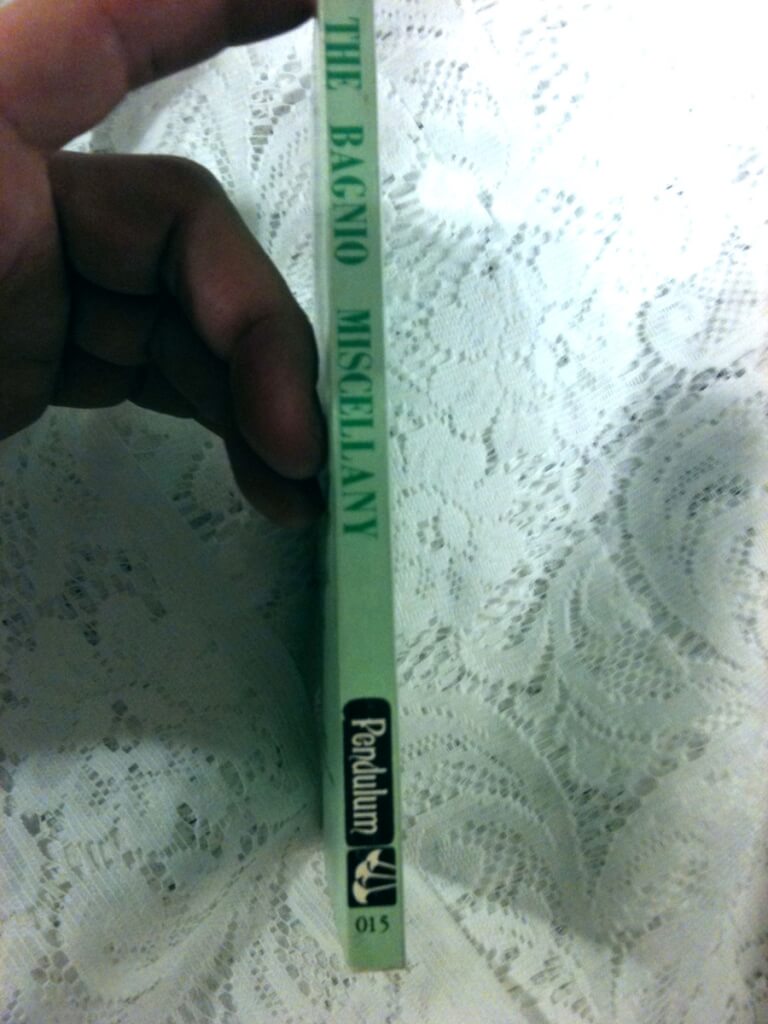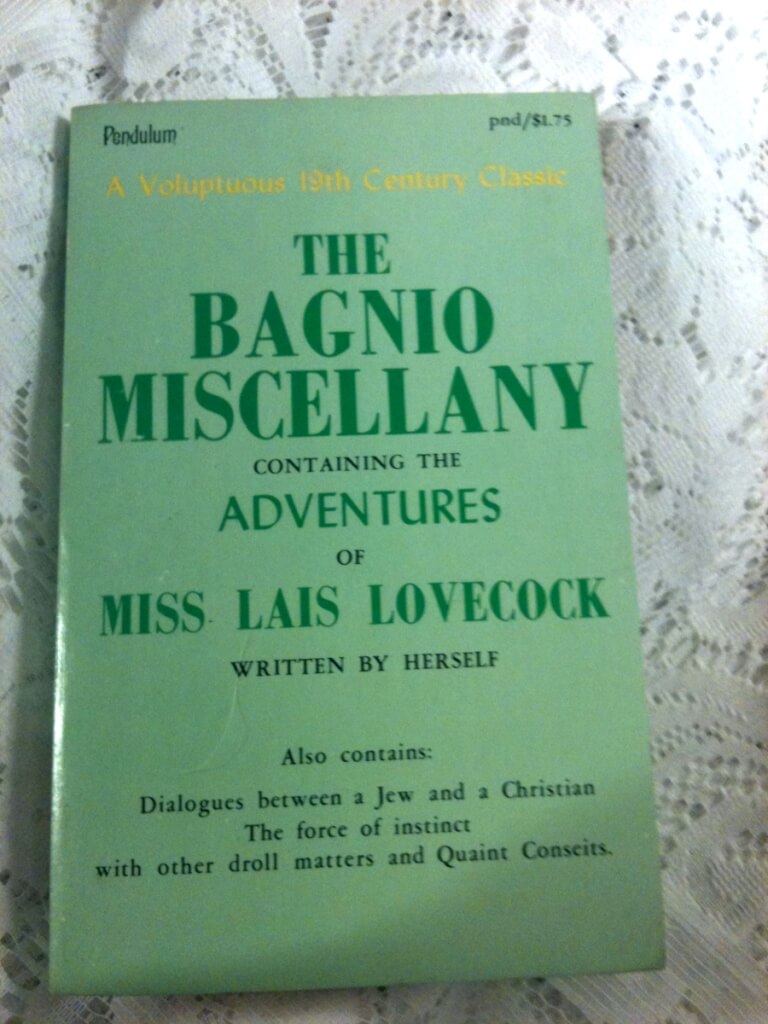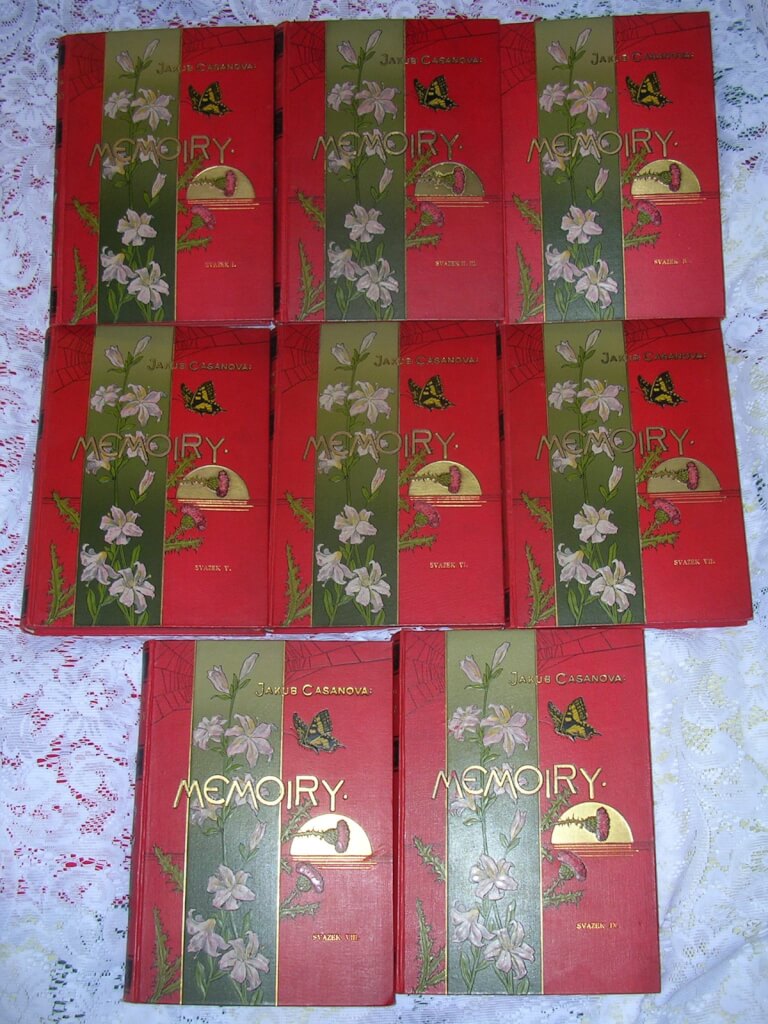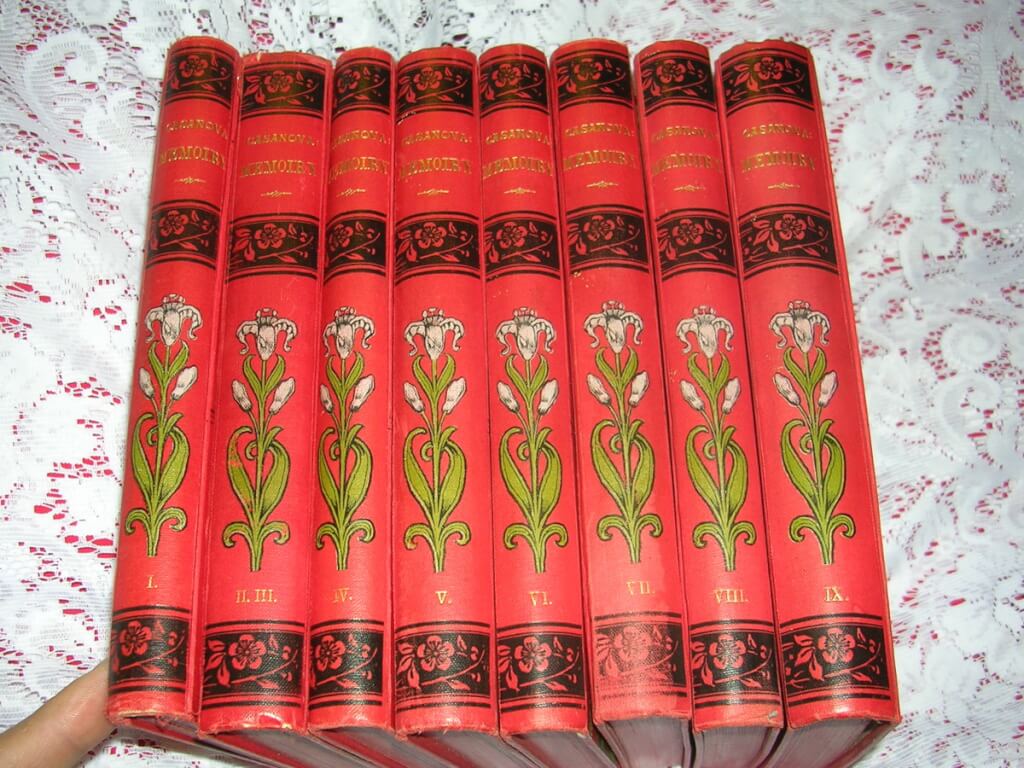The Amours of the Chevalier de Faublas | by John Baptiste Louvet de Courvray | founded on historical facts, interspersed with most remarkable narratives | a literal unexpurgated translation from the Paris edition of 1821, etchings by Louis Monzies from drawings of Paul Avril (Privately Printed for Société des Bibliophiles [possibly Charles Carrington], London 1898, one of 100, first English translation edition)
5.75″x8.25″, 4 volumes, ix+330pp, 367pp, 416pp, 430pp, white spine over green boards, gilt title (“Classics Facetius | Faublas”) and decorations on spine, top edge gilt, others deckled, many pages unopened, spine slightly soiled, slight sunning, otherwise in excellent condition for age, numerous illustrations with titled tissue guards.
This is the first English translation of this work which, when published was a “sensation” all over Europe. It appears to be published by Charles Carrington, who occasionally used the Société des Bibliophiles imprint and often used illustrations from Paul Avril. Édouard-Henri Avril (1849-1928) used the pseudonym “Paul Avril” for his erotic work. He was a French painter and commercial artist. His career saw collaboration with influential people like Octave Uzanne, Henry Spencer Ashbee and Friedrich Karl Forberg. He is one of the most celebrated erotic artists of his age. Avril was a soldier before starting his career in art. He was awarded with the Legion of Honour for his actions in the Franco-Prussian War.
Jean-Baptiste Louvet de Couvrai (1760 – 1797) was born in Paris as the son of a stationer, he became a bookseller’s clerk, and first attracted attention with the first part of his novel “Les Amours du chevalier de Faublas” (5 parts) in 1787; it was followed in 1788 by “Six semaines de la vie du chevalier de Faublas” (8 parts) and in 1790 by “La Fin des amours du chevalier de Faublas” (6 parts). The heroine, Lodoiska, was modeled on the wife of a jeweler in the Palais Royal, with whom he had an affair. She divorced her husband in 1792 and married Louvet in 1793.
This is considered a so-called “libertine” novel. It dwells mainly on the sexual escapades of its hero, a sort of amiable young libertine, and on the corrupted morals of eighteenth-century France. At the start of this novel the young Chevalier de Faublas attends a party dressed as a woman and is knowingly seduced by the lady of the house (‘. I receive with equal astonishment and pleasure a charming lesson, which I repeated more than once .’) Oxford Comp. to French Literature says it is “typical of many frivolous, licentious novels of its time, and still mentioned. Faublas, the amiable hero, is the victim of his own charms. His amorous adventures, recounted with a certain lively force, begin with his entry into society at the age of sixteen. He loves several women by the way and three in particular. A jealous husband and a despairing suicide reduce the three to one. The novel ends on a moral note: Faublas , who had happened to settle down with his remaining love, is haunted by the avenging phantoms of the other two and goes mad.”




































Reviews
There are no reviews yet.